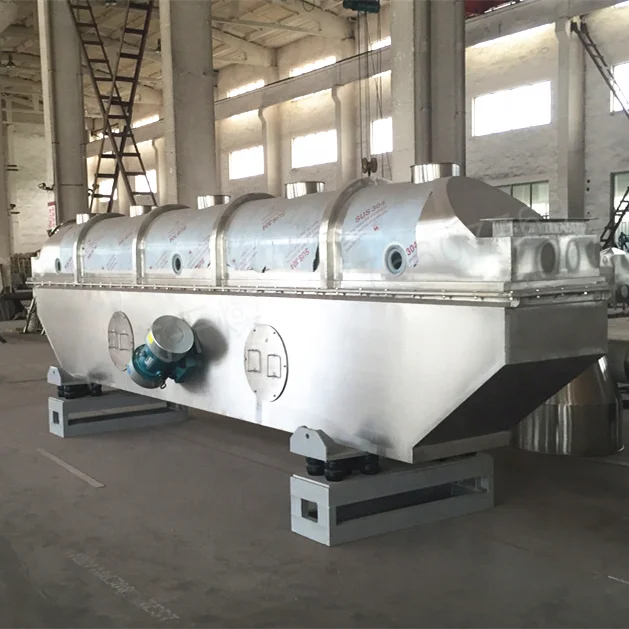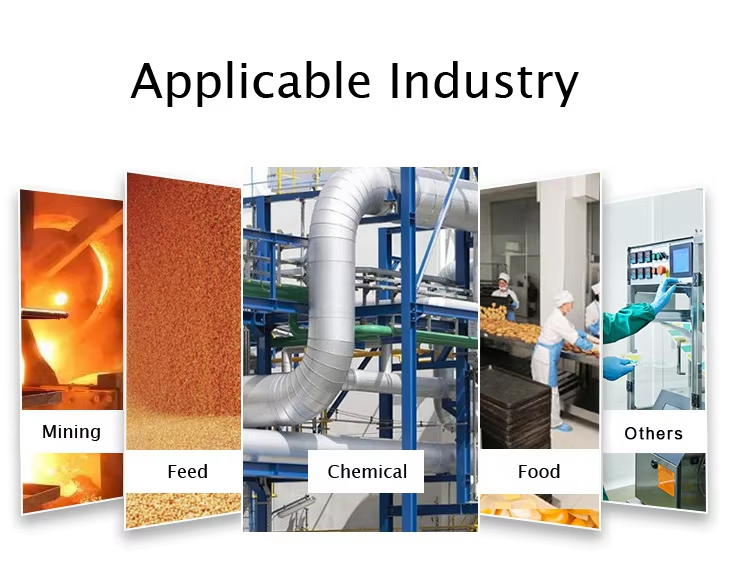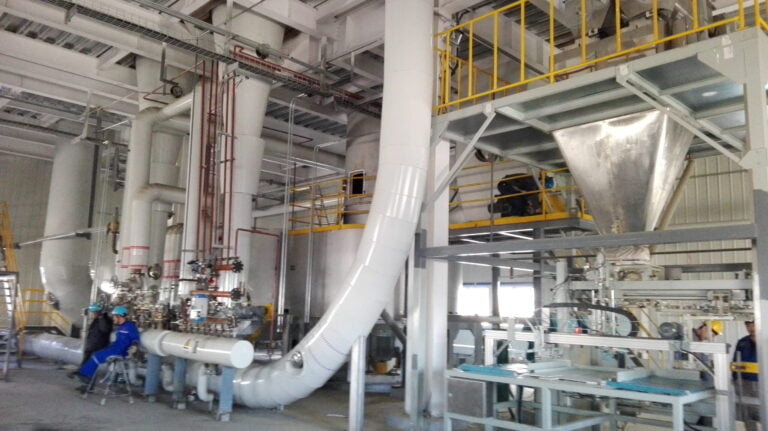了解不同类型的喷雾干燥机及其应用

喷雾干燥机可帮助您一步将液体变成粉末或颗粒. 许多行业都依赖这些机器, 尤其是食物, 奶制品, 和植物性行业.
这 食物 & 乳制品部门 引领喷雾干燥设备市场, 由婴儿配方奶粉等产品推动, 蛋粉, 和咖啡粉.
功能性食品和植物性食品现在占据 几乎一半的市场份额.
新技术, 例如物联网传感器和节能系统, 提高产品质量和保质期.
您会看到多种类型的喷雾干燥机, 每个都是针对特定需求和产品而设计的.
关键要点
喷雾干燥有效地将液体变成粉末, 使产品更容易储存和运输.
不同类型的喷雾干燥机, 如旋转雾化器和喷嘴雾化器, 根据产品特性满足特定需求.
选择合适的喷雾干燥机需要了解材料的粘度, 所需的粒径, 和生产量表.
新技术, 例如物联网和混合系统, 通过提高效率和产品质量来增强喷雾干燥.
喷雾干燥广泛应用于食品, 药品, 和化学品, 提供节能和更长保质期等优点.
喷雾干燥概述

什么是喷雾干燥?
喷雾干燥是一种只需一步即可将液体或浆液转变为干粉末的方法. 当您想要制造易于储存的产品时,可以使用此过程, 运输, 或稍后混合. 该过程的工作原理是将液体喷射到充满热空气的室中. 热量很快去除水分, 留下罚款, 干颗粒.
你可以看到 喷雾干燥的主要阶段 在下表中:
阶段 | 描述 |
|---|---|
准备饲料 | 您准备要干燥的液体或浆料. |
雾化 | 饲料破碎成微小的液滴,以便更好地干燥. |
在室内干燥 | 热空气蒸发这些水滴中的水分. |
颗粒分离和收集 | 干燥的颗粒与空气分离并收集用于包装. |
不同类型的喷雾干燥机使用这些步骤, 但每种类型都有自己的产生液滴和处理干燥过程的方式.
主要优点和用途
与其他干燥方法相比,喷雾干燥具有许多优势. 您可以控制粉末的大小, 确保营养安全, 并制成易溶于水的产品. 该过程也运行得很快, 这可以节省能源并帮助您在更短的时间内生产更多的产品.
这是一个表格,显示了 喷雾干燥的主要优点:
优势 | 描述 |
|---|---|
定制化 | 您可以调整设置以获得所需的粉末尺寸和湿度. |
能源效率 | 快速干燥过程消耗更少的能源, 为您省钱. |
产品质量 | 该过程保证了营养成分和风味的安全, 这对于食品和药品很重要. |
保质期 | 低水分意味着您的产品在货架上的保存时间更长. |
可扩展性 | 您可以对小批量和大批量使用喷雾干燥,而不会损失质量. |
溶解度 | 粉末很容易溶解, 非常适合饮料和即食食品. |
生产率 | 您可以快速生产大量产品, 这可以帮助您满足需求. |
您会在许多行业中发现喷雾干燥. 食品公司将其用于奶粉, 咖啡, 和口味. 制药公司用它来制造药粉. 化学公司将其用于洗涤剂和颜料.
新技术让喷雾干燥变得更好. 混合系统将喷雾干燥与其他方法相结合以改善结果. 一些机器现在使用人工智能来实时监控和调整过程. 其他人则专注于节约能源和减少浪费. 您还可以找到针对敏感产品的特殊系统, 像药物或香料.
当您查看喷雾干燥机的类型时, 你会发现每一款都适合不同的需求. 这可以帮助您选择最适合您的产品和流程的选项.
喷雾干燥机的主要类型

当您查看不同类型的喷雾干燥机时, 你会发现每个人都以独特的方式工作. 正确的选择取决于您的产品, 您的经营规模, 以及您的安全需求. 这是一个 表可帮助您比较喷雾干燥机的主要类型 用于工业:
喷雾干燥机类型 | 机制说明 | 主要优点 |
|---|---|---|
离心喷雾干燥机 | 使用高速旋转盘将液体进料雾化成细小的液滴. | 干燥效率高, 粒径一致, 热敏材料的理想选择. |
压力喷雾干燥机 | 利用高压喷嘴将液体进料雾化, 处理各种粘度. | 多才多艺的, 控制粒度分布, 稳健运营. |
两级喷雾干燥机 | 将单级干燥与额外的流化床相结合以进一步干燥. | 提高能源效率, 提高产品质量, 热敏产品的理想. |
闭式循环喷雾干燥机 | 闭环运行,回收干燥气体, 确保危险材料的安全. | 增强安全性, 环境合规性, 高效溶剂回收. |
旋转雾化喷雾干燥机 | 使用高速旋转轮精确控制粒径. | 精确的粒径控制, 适合大规模作业, 高效运作. |
旋转雾化器 (离心式)
旋转雾化喷雾干燥机 利用离心力将液体变成细雾. 将液体输送到旋转的圆盘或轮上. 光盘高速旋转, 然后液体向外飞, 分解成微小的水滴. 此方法不需要高压, 这样可以减少设备的磨损.
您会在许多行业中找到旋转雾化器喷雾干燥机. 它们非常适合干燥化学品, 矿物质, 甚至用于清理发电厂的空气污染. 您还可以将它们用于食品和药品. 这些干燥机可处理大量物料并为您提供稳定的颗粒尺寸.
提示: 如果您想快速处理大量液体并需要避免堵塞,旋转雾化器非常适合.
以下是一些常见用途:
干燥化学品和矿物质
制作奶粉和速溶咖啡
生产药用粉末
旋转雾化喷雾干燥机为您提供 饲料类型和颗粒尺寸的灵活性. 然而, 由于其移动部件,它们可能会很吵并且需要更多维护.
喷嘴雾化器
喷嘴雾化器喷雾干燥机使用高压喷嘴来破碎液体进料. 将液体推过一个小开口, 并以细雾的形式喷出. 这种方法可以让您控制粉末的大小和形状.
您会在食品中看到喷嘴雾化器喷雾干燥机, 制药, 和化学工业. 他们帮你制作奶粉, 咖啡, 果汁粉, 甚至药物. 这些干燥机可以产生非常细小的颗粒, 有时 小至 2 微米, 但大多数产品仍保留 在下面 100 微米 以避免在烘干机内堆积.
功能性 | 工业应用 |
|---|---|
将液体饲料破碎成微小的液滴, 增加表面积以加快干燥速度 | 食物: 奶粉, 咖啡粉, 果汁 |
确保均匀分布和一致的粒径以提高有效性 | 药品: 药品和其他医药产品 |
创建具有特定粒径和形状的干粉以提高性能 | 化学品: 化肥, 颜料, 染料 |
笔记: 当您需要特定的颗粒尺寸和形状时,喷嘴雾化器效果最佳.
流化和混合系统
流化和混合喷雾干燥系统将喷雾干燥与流化床技术相结合. 在这些系统中, 您分两步干燥产品. 第一的, 您使用喷雾干燥去除大部分水分. 然后, 您在流化床中完成干燥, 热空气吹过粉末的地方, 保持其移动并均匀干燥.
这些类型的喷雾干燥机可帮助您节省能源并提高产品质量. 它们非常适合热敏产品,因为第二阶段使用较低的温度. 您可以将它们用于食物, 药品, 和特种化学品.
益处 | 描述 |
|---|---|
流态化和雾化相结合,快速去除水分. | |
保持产品质量 | 温和的干燥条件最大限度地减少热损伤. |
粒径均匀 | 一致的干燥和粒度分布. |
多功能性 | 处理多种饲料原料. |
减少能源消耗 | 由于高效的热传递,能源消耗更低. |
提示: 如果您想保护敏感成分或需要均匀的粉末,请选择流态化或混合系统.
单级和两级
单级喷雾干燥机一步干燥您的产品. 将液体喷入热空气中, 随着水分蒸发,粉末形成. 此方法适用于不需要严格控制水分含量的产品.
两级喷雾干燥机增加了第二个干燥步骤. 第一阶段结束后, 部分干燥的粉末移动到流化床进行温和的处理, 最后干燥. 此设置可让您更好地控制最终水分,并有助于保护热敏产品.
特征 | 单级喷雾干燥机 | 两级喷雾干燥机 |
|---|---|---|
干燥工艺 | 初始干燥后的附加干燥步骤 | |
水分控制 | 对最终水分含量控制较少 | 实现更一致的水分含量 |
适应性 | 适用于低水分含量产品 | 热敏产品的理想选择 |
常见行业 | 食品和化学工业 | 乳制品和制药行业 |
两级喷雾干燥机可帮助您处理更大的体积并分离不需要的材料, 像茎和茎, 从你的主要产品. 这使它们成为优质粉末和节能的明智选择.
闭路循环和大气
闭式循环喷雾干燥机使用带有惰性气体的密封系统, 例如氮气, 代替空气. 此设置可确保您的产品免受氧气侵害并防止火灾或爆炸. 对于易燃物,您应该使用闭式循环系统, 有毒的, 或易氧化材料.
常压空气喷雾干燥机使用环境中的常规空气. 这些都是常见的安全, 无毒产品. 然而, 它们可能会向空气中释放溶剂或气味, 这对于某些应用程序来说可能是个问题.
方面 | 闭式循环喷雾干燥机 | 常压空气喷雾干燥机 |
|---|---|---|
安全 | 有害物质的风险更高 | |
溶剂回收 | 100% 溶剂回收, 节能 | 潜在的溶剂损失, 环境问题 |
环境影响 | 防止挥发性有机化合物的释放 | 可能会导致挥发性有机化合物(VOC)排放 |
You should pick closed cycle spray dryers for:
Flammable materials
Combustible solvents
Products that oxidize easily
Toxic or hazardous substances
Atmospheric air spray dryers work well for:
Food powders
Dairy products
Non-hazardous chemicals
笔记: Always match the type of spray dryer to your product’s safety and environmental needs.
By understanding the main types of spray dryer, you can choose the best system for your product, safety, and quality goals.
优点和缺点
Advantages of Each Type
当您查看不同类型的喷雾干燥机时, you will see that each one brings special strengths to your process. You can use the table below to compare the main advantages:
优势 | 描述 |
|---|---|
Continuous Operation | Lets you run your process without stopping, so you get steady product quality and high output. |
Rapid Drying Kinetics | Removes moisture in seconds, which helps protect sensitive ingredients from heat damage. |
Retention of Volatile Flavors | Keeps most flavors and nutrients in your product, even after drying. |
Control Over Product Quality | Gives you the power to set particle size, 形状, and how the powder flows. |
多功能性 | Handles many kinds of liquid feeds, so you can use it in food, 制药, 和化学工业. |
You also get these benefits:
You reduce waste and product loss.
You boost your yield and make more product.
You ensure high-quality results every time.
Some spray dryers use microencapsulation. This method wraps sensitive ingredients, like vitamins or flavors, in a protective shell. You keep these ingredients safe during drying. Advanced systems let you control particle size and structure, which helps you keep more nutrients and flavors.
提示: If you need to protect sensitive proteins, look for systems with pulse atomization. These systems use less heat and keep your ingredients safe.
Limitations and Challenges
You may face some challenges with spray drying. Here are common issues you should watch for:
Cross-product contamination can happen if you do not clean the dryer well between batches.
Upscaling from lab to factory can be hard. You might see different results because of temperature or atomization changes.
Picking the wrong atomizer can cause uneven particle sizes or powder build-up.
High moisture or low temperature can make large clumps in your powder.
Incomplete drying leaves too much moisture, so you may need to dry the product again.
Other challenges include:
Some materials, like sticky or thermoplastic powders, can stick inside the dryer.
Large spray dryers may have weaker spots that need extra care for safety.
Flexible couplings between machines can break if not checked often.
Some feeds, like thick polymers, do not atomize well.
You should also think about costs. Spray dryers need regular cleaning and maintenance. You pay for energy to heat the air and for replacing worn-out parts, like pumps and sprayers. High-speed machines may wear out faster, so you need to plan for repairs.
笔记: Always match the type of spray dryer to your product and process. This helps you avoid problems and get the best results.
Choosing a Spray Dryer
选择标准
You need to look at several important factors before you pick a spray dryer. Start by defining your requirements. Think about the type of material you want to dry, the properties you want in your final product, and how much you need to produce. Make sure the spray dryer matches the physical and chemical properties of your material. 例如, if your feed has high viscosity, you need a robust atomizer or a special nozzle design. If your feed contains a lot of solids, you may need more energy for drying or even pre-concentration.
Here is a checklist to guide your decision:
Define your requirements for material type, product properties, and production capacity.
Check that the spray dryer is compatible with your material’s viscosity and solids content.
Assess drying efficiency by looking at air temperature and nozzle design.
Make sure you can control particle size.
Consider if the equipment can scale up for future needs.
Choose a system that is easy to clean and maintain.
Look for automation features that help with consistency.
Ensure the dryer has safety features and meets standards.
Review the total cost, including maintenance and energy use.
Ask for expert advice or pilot testing if you are unsure.
“We initially underestimated the importance of feed viscosity when selecting our spray dryer. This oversight led to frequent nozzle clogging and inconsistent particle sizes, ultimately requiring a costly retrofit.”
应用适合度
You should match the spray dryer type to your product and industry. In the food industry, you want a machine that fits your production scale and material type. Oversized machines waste energy, while small ones slow you down. Pick a dryer that is easy to clean and maintain. Energy-efficient models help you save money and reduce your environmental impact.
因素 | 描述 |
|---|---|
Capacity Needs | Match the machine to your current and future production scale. |
Material Type | Make sure the dryer works with your feed material and its properties. |
能源消耗 | Choose energy-efficient models to lower costs and environmental impact. |
维护 | Select equipment that is simple to clean and maintain. |
Supplier Reputation | Work with trusted suppliers for better support and spare parts. |
In pharmaceuticals, you must control particle size and ensure sterility. The atomization method and feed concentration affect the final particle size. For inhalable medicines, you need a dryer that produces small, 均匀颗粒. Aseptic spray drying is often more economical than freeze-drying for protein products.
提示: Always match your spray dryer to your product’s needs, safety requirements, and industry standards. This helps you get the best results and avoid costly mistakes.
You have seen that rotary atomizer and nozzle atomizer spray dryers differ in chamber design, 空气流动, and solids handling. Matching the dryer type to your product ensures better results and efficiency. Always review technical, operational, and economic factors before making a choice:
类别 | Key Considerations |
|---|---|
定制化, 支持, compliance | |
Economic Factors | Investment, 活力, 维护 |
For complex needs, you can reach out to experts like Pump Solutions Inc. or Experic for tailored advice.
常问问题
What is the main difference between rotary atomizer and nozzle atomizer spray dryers?
Rotary atomizers use a spinning disc to create droplets. Nozzle atomizers use high-pressure nozzles. You get more control over particle size with rotary atomizers. Nozzle atomizers work better for thicker liquids.
Can you use spray dryers for heat-sensitive products?
是的, you can. Two-stage and fluidized bed spray dryers use lower temperatures in the second stage. This helps protect vitamins, proteins, and other sensitive ingredients from heat damage.
How do you choose the right spray dryer for your product?
You should look at your product’s properties, like viscosity and heat sensitivity. Think about your production size and safety needs. Ask for expert advice or run pilot tests if you feel unsure.
What are common problems you might face with spray dryers?
You might see nozzle clogging, uneven particle sizes, or powder sticking inside the chamber. Regular cleaning and choosing the right atomizer help you avoid these issues.






